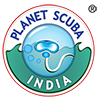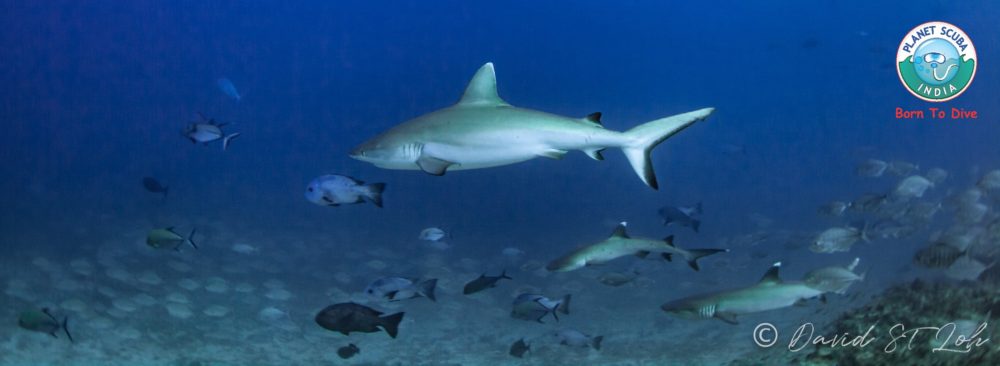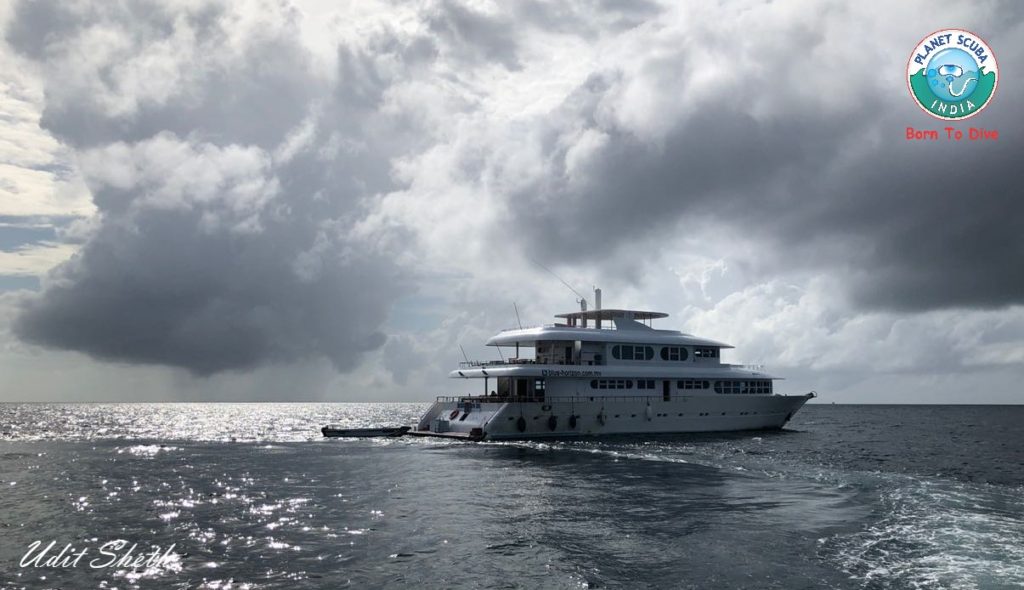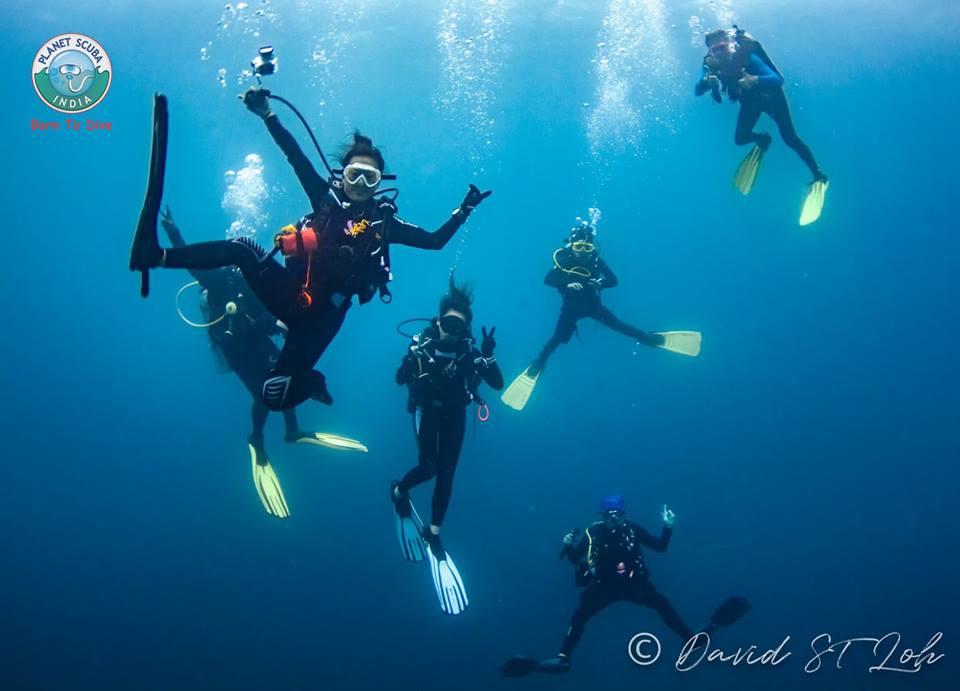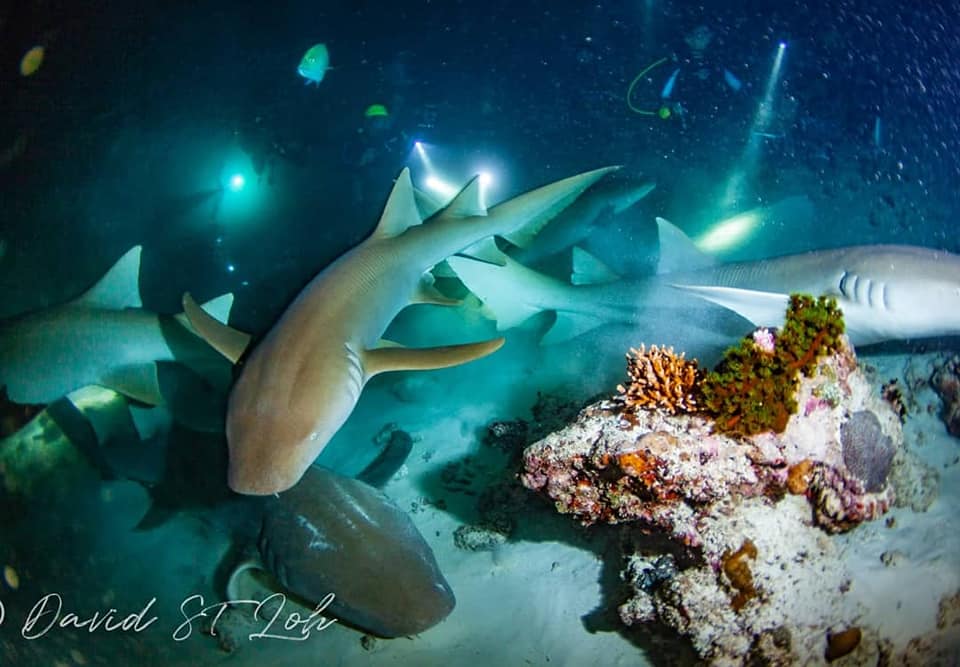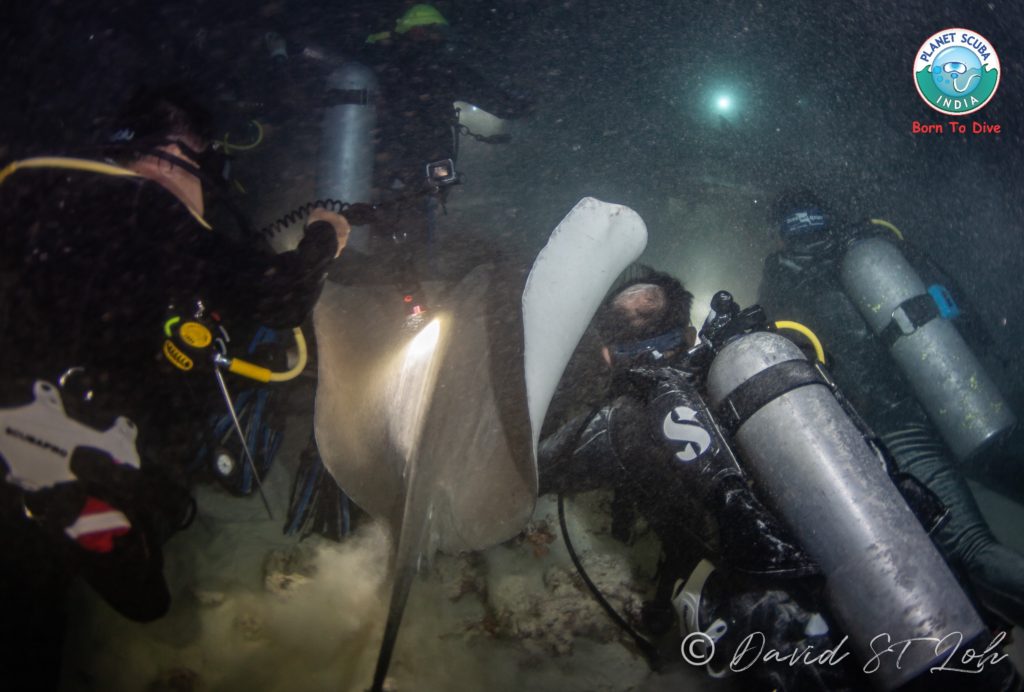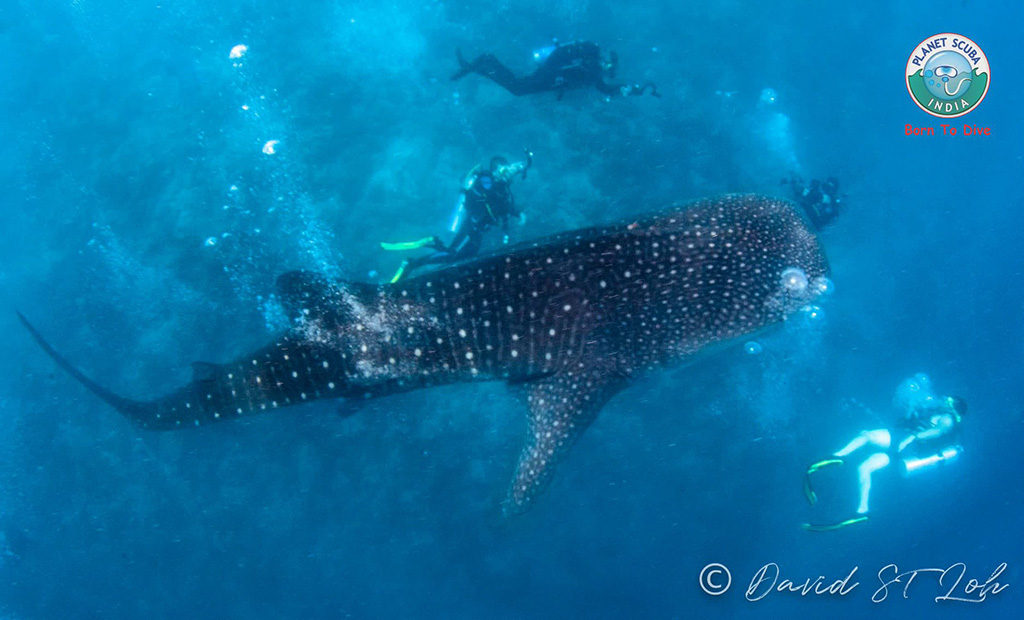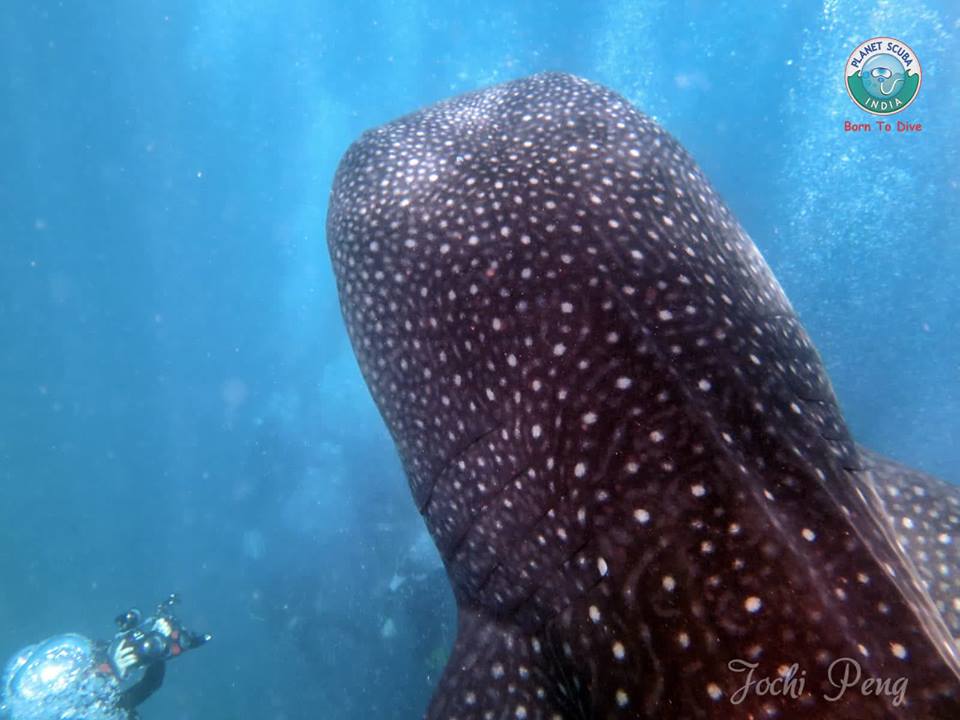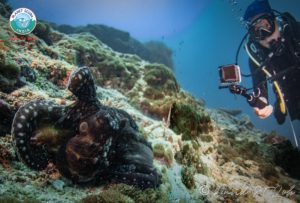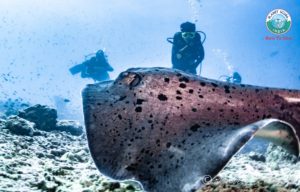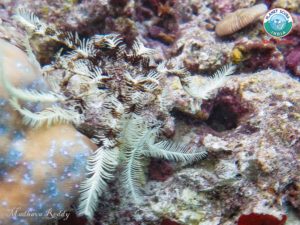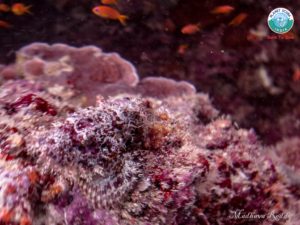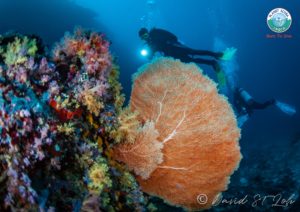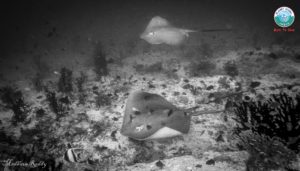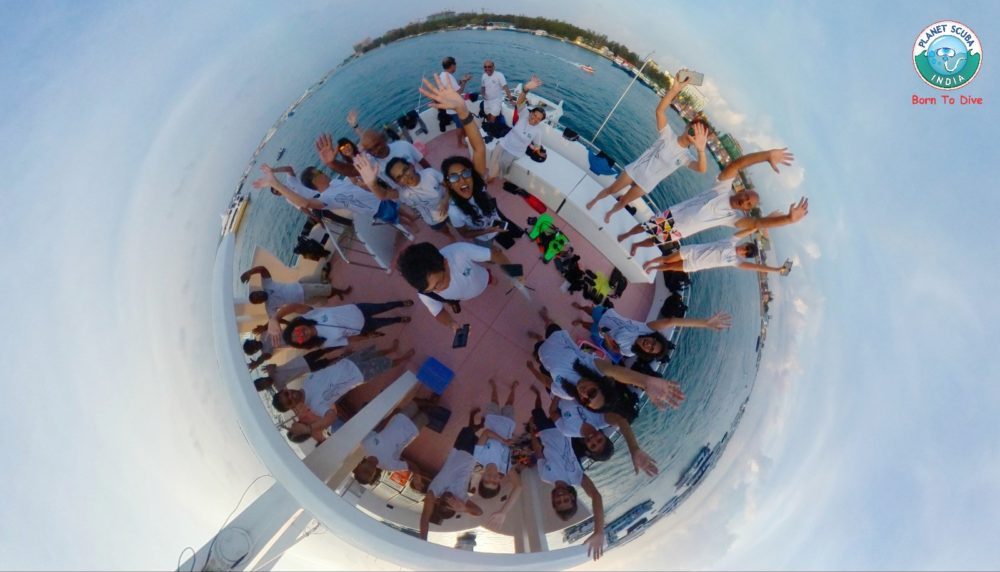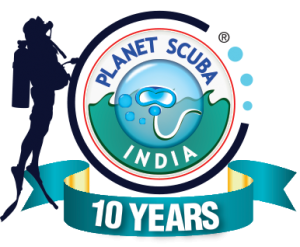 What happens when on the initial day of your scuba diving holiday itself you see manta rays and dozens of white tip and grey reef sharks? Well, the stakes just get higher for the dive guides. But then again, this is the Maldives! The tropical paradise made up of 26 atolls, with some of the best scuba diving sites in the world. And every dive here is simply spectacular.
What happens when on the initial day of your scuba diving holiday itself you see manta rays and dozens of white tip and grey reef sharks? Well, the stakes just get higher for the dive guides. But then again, this is the Maldives! The tropical paradise made up of 26 atolls, with some of the best scuba diving sites in the world. And every dive here is simply spectacular.
Scuba diving holiday in Magical Maldives
For Planet Scuba India, this was our third trip to the Maldives in 2018. And, come to think of it, it seemed like each diving holiday was trying to supersede the previous one. This time around, our liveaboard of choice was the Horizon 3. From October 7-13, this luxury liveaboard was home to 23 guests of different nationalities—Indians, Singaporeans, Taiwanese, Malaysians. Including two divers from India completing their PADI Open Water Diver course. They then went on to complete their PADI Advanced Open Water Diver course, along with three other scuba divers from India.
This diving holiday also had a couple of non-divers (who enjoyed themselves just as much, if not more) and some of the best photographers. You need only take a look at the pictures to nod in agreement.
It was six fun-filled days of eat, sleep and dive! And, of course, swapping of hilarious, unforgettable scuba diving adventures.
Here are some of the highlights of one of our best diving holidays in the Maldives.
The Manta show
First dive of the day at Lankan Manta point. This dive site, at the southeastern outer reef of Lankanfinolhu Island, is one of the most popular cleaning stations for manta rays in North Male Atoll. And, as luck would have it, on the day of our dive, the manta rays showed up in all their magnificent glory. We took a giant stride off the dive dhoni, descended a few meters, and gasped in awe (well, as much as one can gasp with regulator in mouth), as a manta ray elegantly swam past. Not knowing then that this was just a prelude of what was to come a few minutes later. Our dive guide led us to the coral blocks of the cleaning station. And, lo behold, heads swiveled in every direction as mantas glided in, out, and around in circles.
Here’s the thing about cleaning stations: they are a riot of colors. It is not just the mantas vying for attention but brightly hued cleaner fish, vibrant corals, and a motley of sea creatures. There is just so much to take in that you rue the fact that your neck isn’t able to turn more than 90 degrees. Just how are you supposed to see the cuttlefish whooshing past behind your back, when you eyes are so intensely trained on the spectacular subjects in front of you?!
Mantas come calling
Subjects that came to visit us later that night. Bang at dinnertime! Who cares about food when you can watch a manta ray circle around the back of your boat instead. Well, to be fair, it was dinnertime for the mantas too. And one somersaulted away, mouth agape, sieving marine organisms out of the water and into its stomach. Round and round it went, as 23 heads (more if you count the crew) stuck out of the sides of the boat watching in fascination. That is, till it had had its fill and glided away as surreptitiously as it had appeared.
Shark tale
Bathala Maaga Kanthila, North Ari Atoll. Even though this dive site, which we visited right after the underwater manta ray spectacle, had grey reef and white tip sharks. Not to forget, schools of yellowback fusiliers and a huge Napoleon wrasse that stole the show. It was the dive at Fish Head at North Ari Atoll that remains etched in our memory. Perhaps it was the story that did it for us. As our dive guide, Marko, told us during the briefing that at one time this was a famous fishing spot. But when the fishermen reeled in their catch, all they got was the heads of the fish. The sneaky sharks had eaten up the rest. Or perhaps it was the dive site itself. With its multiple ledges and picturesque overhangs replete with fan corals and abundant fish life.
Again, just a few meters and a few minutes into the dive, we spotted sharks right below us. Our dive guide took us on a detour, around one ledge and onto another below it. Having us swim stealthily to not disturb the unfolding drama. Sharks darted around, remoras in tow, while parrotfish hid in crevices in corals. And clownfish peeked out of anemones. Crustaceans moved a centimeter at a time to not be spotted.
It was 45 minutes of spying on sharks. Eyes wide in wonderment; cameras trained at the action. Grey reef sharks and white tip sharks, and also barracudas—all the predators at their A-game. Little wonder then that Fish Head, also known as Shark Point or Mushimasmingili Thila, is listed as one of the most famous dive sites in the world.
Night dive with nurse sharks
We just can’t get enough of sharks. Especially on night dives. Two months later, we were back during this diving holiday too to be bumped into by nurse sharks. Simply put, the dive at Alimatha Jetty, Vaavu Atoll, offers an adrenaline rush like no other. And to think that all you need to do is kneel on a sandy bottom. While nurse sharks, stingrays, travellies whip around you foraging for food. If we had to bet on a species, it would be the crafty travellies, who gulped down the food faster than the nurse sharks and stingrays could wonder: ‘where the heck did it go?’. It was a surreal experience that no amount of photographs or videos could do justice to. Though the ace photographers did manage to capture little snippets of the frenzy.
Back at the boat after the dive, and the nurse sharks came visiting. Who would have thought that after all the action underwater, there would still be so much excitement to see them. Cameras were whipped out. Facebook Lives were posted. Frantic video calls were made to friends to gloat about what they were missing.
Whale shark frenzy
There’s only one thing in the Maldives that can get divers into the water faster than you can blink. And that’s the much-awaited sound of someone screaming: ‘whale shark’! On this diving holiday, we snorkeled to see one just after our dive at Dhigurah Beyru, South Ari Atoll; a dive site that counts whale shark encounters as one of its highlights. It was a mad jumble of divers, cameras and fins, as a lonesome whale shark swam calmly, feeding its way through the waters. Seemingly oblivious to the mayhem unfolding above, for just a glance of it.
The UMS
Colloquially, UMS, or usual Maldivian stuff, is a term used to describe everything from soft corals to giant turtles. That’s because every dive in the Maldives reveals spectacular sights and secrets. Marble rays hunting together. Octopuses, tentacles intertwined, in a sort of a love-hate dance. Mantis shrimp peeking out from its coral den. Scorpionfish in perfect camouflage waiting for its prey. Turtles gorging themselves silly on sponges. Sweetlips hanging out under overhangs. Moray eels getting spruced up by banded coral cleaner shrimps. Shoals of glassfish darting in and out of a wreck. Feather starfish climbing over hard corals. Stingrays swimming in and out of camera range. Schools of bannerfish, yellowback fusiliers, batfish, red snappers just going about their day underwater. And a liveabord full of happy divers. ‘Coz you just couldn’t ask for a better diving holiday destination than the Maldives.
Scientists study coral reefs in Gulf of Kutch – Times of India
Experts study coral reefs in Gulf of Kutch
Occasions of India
RAJKOT: Experts of numerous investigation establishments throughout the region have carried out a biophysical monitoring of the coral reefs in Gulf of Kutch at the Marine Nationwide Park (MNP) in Jamnagar. Following the workout, experts will evaluate the findings …
UPDATE: Senator introduces bill on coral reef protectionPacific Day-to-day News
Cruz Intros Measure to Safeguard Coral Reefs From Grounded VesselsPacific News Middle
Cryopreservation: cold comfort for coralPhysOrg.com (press release)
Sea Turtles of India
Sea turtles have long fascinated both biologists and conservationists. All of the seven species found in the world’s oceans are listed as either endangered or threatened. Of these, five species are found in waters of the Indian subcontinent. There are several important sites and populations in the Indian subcontinent, including the mass nesting beaches for olive ridleys in Orissa, feeding and nesting grounds for green and hawksbill turtles in the Andaman and Nicobar Islands, and the Lakshadweep Islands, and a significant nesting population of leatherbacks in the Little Andaman and Nicobar Islands. The subcontinent faces several serious threats that conservation efforts need to address urgently.
This website was developed to collate information that currently exists on sea turtles and their habitats not just in India but in neighbouring South Asian countries as well. Numerous community based groups, conservation non-governmental organizations (NGOs) – local, national and international, academic institutions and government departments have contributed to studies and surveys that have helped understand these mysterious yet fascinating creatures. There has long been a need to make available this information that can be easily accessed by students, researchers and interested persons. This site therefore is an attempt to create such a space where research findings, notes, historical records, photos and the successes of various conservation activities across the region may be made available to anyone who might be interested.
Rebuilding coral reefs for fisheries
Thoothukudi [earlier Tuticorin] in southern Tamil Nadu has been renowned over the centuries for its pearl and fisheries wealth. But today it stands stripped of these natural resources largely due to commercial activity that could not be sustained. Natural coral reefs have been plundered and whole coastal communities are in poverty.
Chennai based M S Swaminathan Research Foundation [MSSRF] has now stepped in to remedy the damage to nature and society. On World Wetlands Day [Feb 3] it deployed a series of artificial reefs over a one square kilometer area , 14km off Therespuram fishing village. Over time these reefs are expected to be colonised by marine organisms and eventually become expanding natural coral reefs.
But this can happen only if people leave the reefs alone for a few years and then harvest them sustainably. MSSRF has worked out a scheme from the ground up involving the local population. First they were educated on the need for protection of the artificial reefs and the methods of sensible harvesting. A newly formed artificial reef society based in Therespuram will police the reef. Local trawler operators have promised to stay off the new reef grounds.
The idea of artificial reefs is not new. But world wide, the focus has been on remedying damaged coral reefs and to enhance scuba diving experience. The pioneering Indian effort is focused on sustainable economic development. The reefs are made of marine friendly concrete and weigh about 1.5 tonnes each. They are designed with openings and niches for organisms to colonise. Over time a whole marine ecosystem grows around the artificial reef and colonies of fish establish themselves.
When the reef is ready for harvesting, fishing will be done only by pole and line. To add value to the catch MSSRF has encouraged a local, women’s self help group to establish a fish pickling factory. The women have been trained by a large factory and their product will be branded and marketed by a Chennai based sea foods distributor. Thus the reef idea has been well thought through— from the sea bed to the supermarket shelves.
If the Therespuram experiment succeeds the reef idea will be taken to ten more villages. Luckily as costs go, the innovation is not expensive.
City Under the Sea
B.K. Parthasarathy writes about a spectacular underwater archaeological find by a joint British-Indiandiving team that could rewrite history. (10-17-02)
Who would have thought a city that could be older than the Harappan civilization could be lying beneath water right off the coast of Mahabalipuram?
Sometimes, it pays to listen to the stories of humble fishermen. Local fishermen in the coast of Mahabalipuram in Tamil Nadu have for centuries believed in that a great flood consumed a city over 1,000 years ago in a single day when the gods grew jealous of its beauty.
The myths of Mahabalipuram were written down by British traveler J. Goldingham, who visited the town in 1798, at which time it was known to sailors as the Seven Pagodas. Legend had it that six temples were submerged beneath the waves, with the seventh temple still standing on the seashore.
Best-selling British author and television presenter Graham Hancock took these stories seriously. The hypothesis that there may be ruins underwater off the coast of Mahabalipuram has been around at least since the eighteenth century among scholarly circles.
“I have long regarded Mahabalipuram, because of its flood myths and fishermen’s sightings as a very likely place in which discoveries of underwater structures could be made, and I proposed that a diving expedition should be undertaken there,” said Hancock.
Hancock’s initiative resulted in the Dorset, England-based Scientific Exploration Society and India’s National Institute of Oceanography joining hands. In April this year, the team made a spectacular discovery
The SES announced: “A joint expedition of 25 divers from the Scientific Exploration Society and India’s National Institute of Oceanography led by Monty Halls and accompanied by Graham Hancock, have discovered an extensive area with a series of structures that clearly show man made attributes, at a depth of 5-7 meters offshore of Mahabalipuram in Tamil Nadu.
“The scale of the submerged ruins, covering several square miles and at distances of up to a mile from shore, ranks this as a major marine-archaeological discovery as spectacular as the ruined cities submerged off Alexandria in Egypt.”
India’s NIO said in a statement: “A team of underwater archaeologists from National Institute of Oceanography NIO have successfully `unearthed’ evidence of submerged structures off Mahabalipuram and established first-ever proof of the popular belief that the Shore temple of Mahabalipuram is the remnant of series of total seven of such temples built that have been submerged in succession. The discovery was made during a joint underwater exploration with the Scientific Exploration Society, U.K.”
NIO said:
* Underwater investigations were carried out at 5 locations in the 5 – 8 m water depths, 500 to 700 m off Shore temple.
* Investigations at each location have shown presence of the construction of stone masonry, remains of walls, a big square rock cut remains, scattered square and rectangular stone blocks, big platform leading the steps to it amidst of the geological formations of the rocks that occur locally.
* Most of the structures are badly damaged and scattered in a vast area, having biological growth of barnacles, mussels and other organisms.
* The construction pattern and area, about 100m X 50m, appears to be same at each location. The actual area covered by ruins may extend well beyond the explored locations.
* The possible date of the ruins may be 1500-1200 years BP. Pallava dynasty, ruling the area during the period, has constructed many such rock cut and structural temples in Mahabalipuram and Kanchipuram.
The last claim is questioned by Hancock, who says a scientist has told him it could be 6,000 years old.
Durham University geologist Glenn Milne told him in an e-mail: “I had a chat with some of my colleagues here in the dept. of geological sciences and it is probably reasonable to assume that there has been very little vertical tectonic motion in this region [i.e. the coastal region around Mahabalipuram] during the past five thousand years or so. Therefore, the dominant process driving sea-level change will have been due to the melting of the Late Pleistocene ice sheets. Looking at predictions from a computer model of this process suggests that the area where the structures exist would have been submerged around six thousand years ago. Of course, there is some uncertainty in the model predictions and so there is a flexibility of roughly plus or minus one thousand years is this date.”
If that were true, it would be a spectacular development. Previous archaeological opinion recognizes no culture in India 6,000 years ago capable of building anything much.
Hancock says this discovery proves scientists should be more open-minded. “I have argued for many years that the world’s flood myths deserve to be taken seriously, a view that most Western academics reject. “But here in Mahabalipuram, we have proved the myths right and the academics wrong.”
Hancock believes far more research needs to be done on underwater relics.
“Between 17,000 years ago and 7000 years ago, at the end of the last Ice Age, terrible things happened to the world our ancestors lived in,” he says. “Great ice caps over northern Europe and north America melted down, huge floods ripped across the earth, sea-level rose by more than 100 meters, and about 25 million square kilometers of formerly habitable lands were swallowed up by the waves.
“Marine archeology has been possible as a scholarly discipline for about 50 years — since the introduction of scuba. In that time, according to Nick Flemming, the doyen of British marine archeology, only 500 submerged sites have been found worldwide containing the remains of any form of man-made structure or of lithic artifacts. Of these sites only 100 — that’s 100 in the whole world! — are more than 3000 years old.”
Hancock, who was understandably resentful about the NIO’s silence in his pivotal role in making the diving expedition happen — SES gave him full recognition — was himself quite generous about who deserved the greatest credit:
“Of course the real discoverers of this amazing and very extensive submerged site are the local fishermen of Mahabalipuram. My role was simply to take what they had to say seriously and to take the town’s powerful and distinctive flood myths seriously. Since no diving had ever been done to investigate these neglected myths and sightings I decided that a proper expedition had to be mounted. To this end, about a year ago, I brought together my friends at the Scientific Exploration Society in Britain and the National Institute of Oceanography in India and we embarked on the long process that has finally culminated in the discovery of a major and hitherto completely unknown submerged archaeological site.”
Interested readers can visit the following Web sites for more information. The Scientific Exploration Society’s Web site at http://www.india-atlantis.org/
And Graham Hancock’s Web site at http://www.grahamhancock.com/
Source: india.krishna.org
